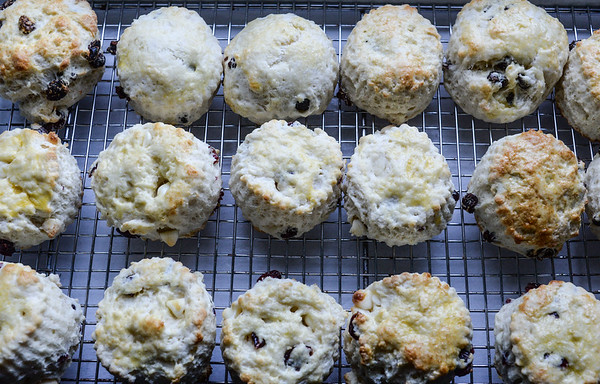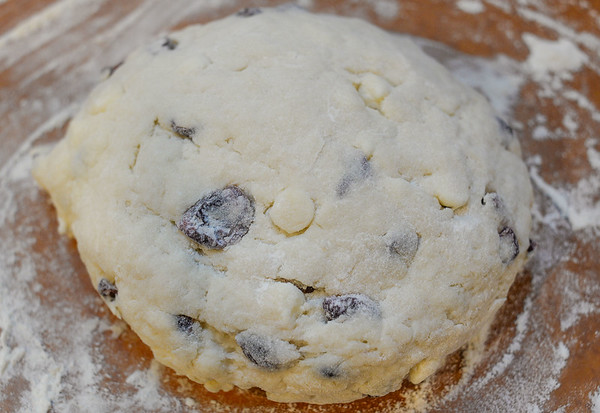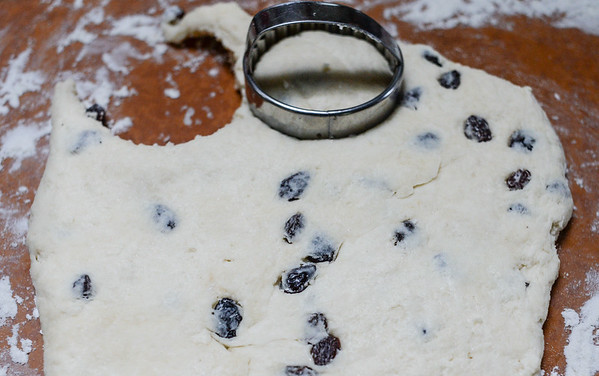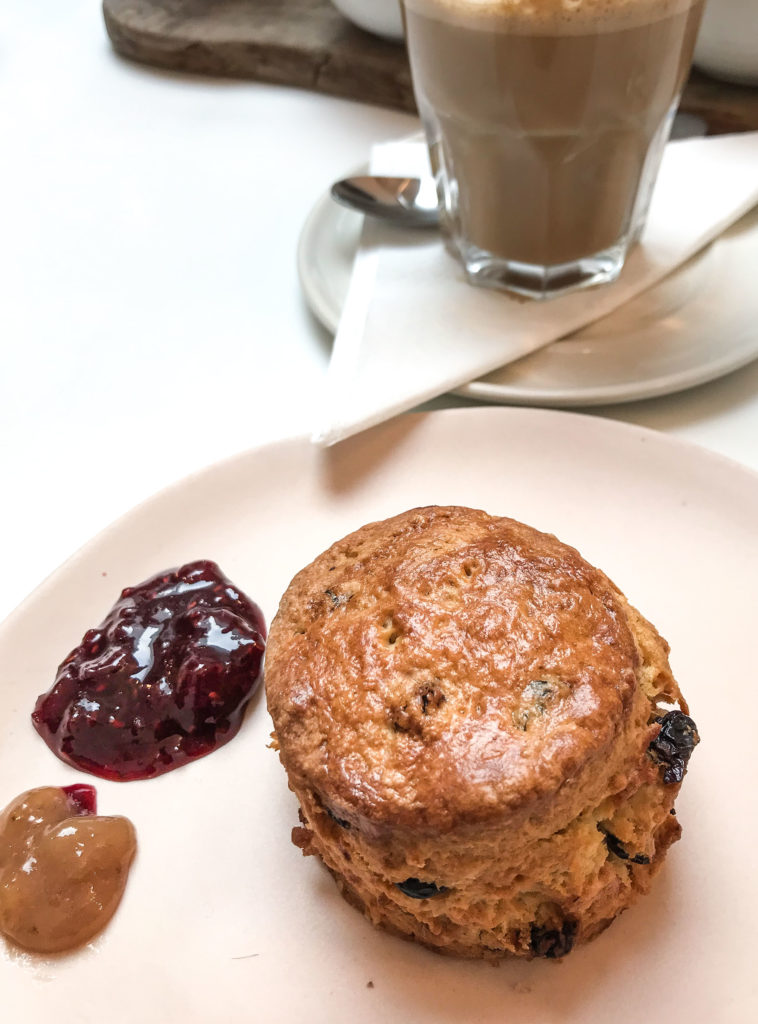Scones. They’re one of the most British of all British dishes and something I’ve been baking for years. What can I say? I’m an Anglophile who spent her childhood immersed in the British punk and new wave scene, BBC television and the works of every 19th and 20th century British writer that the New Castle Public Library carried. When asked what I wanted as a high school graduation gift, I didn’t beg for a car or a trip to the beach with friends. I wanted a ticket to London and a pair of black Dr. Martens. (I instead got luggage, which I never once used.) Ten years later I finally made it to England, bought my black, 1461 Docs and had my first English tea with scones and clotted cream. That initial tea hooked me on those luscious, little biscuits, and I’ve been making variations of them ever since.

Raisin scones and white chocolate-cranberry scones cooling on a rack
Origin of Scones
The word “scone” has been around since the 16th century and reputedly comes from the Scottish “sconbrot.” It refers to a soft, flat, simple baked good leavened with baking powder or soda and sour milk or buttermilk. Brushed with an egg wash, this treat is baked briefly at a high temperature and then served with butter or clotted cream and preserves. I can’t think of a more perfect partner for a cup of hot tea than a raisin-studded, clotted cream- and strawberry jam-slathered scone.
Just what is clotted cream?
A scone can be sweet or savory. As I suffer from that incorrigible sweet tooth, I opt for sweet versions, making them with dried fruit such as raisins, cranberries, currants or chopped dates or apricots or a bit of orange or lemon zest. If I’m feeding friends who like things even sweeter than I do, I may add a bit of white chocolate or candied pecans to the dough. Those certainly aren’t traditional ingredients, but the resulting scones are delicious nonetheless.
One of those less traditional scones is the following White Chocolate-Cranberry Scone. If you dislike cranberries or white chocolate, you can substitute 1/3 cup of raisins, currants or chopped dates or apricots for the cranberries and chocolate.
WHITE CHOCOLATE-CRANBERRY SCONES
Makes 9 (2-inch) scones
1 1/2 cups plus 2 tablespoons all-purpose flour
2 teaspoons baking powder
1/2 teaspoon salt
1/2 stick of unsalted butter, diced
1/4 cup granulated sugar
1/4 cup dried cranberries
1/4 cup white chocolate chips
2/3 cup buttermilk
1 egg, beaten, for the glaze
Clotted cream, optional, for serving
Strawberry or raspberry jam, optional, for serving
Preheat the oven to 450 degrees Fahrenheit. Line a baking sheet with parchment paper.
Sift the flour, baking powder and salt into a large mixing bowl. Using either a pastry cutter or your hands, blend the butter into the flour mixture until the ingredients resemble coarse bread crumbs. Add the sugar, dried cranberries and chocolate and stir to combine.
Make a well in the center of the flour mixture and pour in the buttermilk. Stir until a soft dough forms. If you find that the dough is a bit crumbly, lightly knead it with your hands until it’s smooth.

Smooth, soft white chocolate-cranberry dough before it’s been rolled out
Place the dough on a lightly floured work surface and knead for 1 minute. Form it into a ball and flatten it with your hands. Using a lightly floured rolling pin, roll out the dough to 1-inch thick. With a 2 1/2-inch biscuit cutter, cut out 9 scones. More than likely you’ll have to form the remaining scraps of dough into a ball, roll it out and cut it again.

Cutting out raisin scones
Transfer each scone to the parchment-lined baking sheet. Brush the tops of the scones with the beaten egg.
Place the baking sheet in the oven and bake the scones for 7 to 10 minutes, until they’ve risen and become golden on top. Remove the scones from the oven and place on a wire rack to cool completely. Serve with a side of clotted cream and preserves.

2 Comments